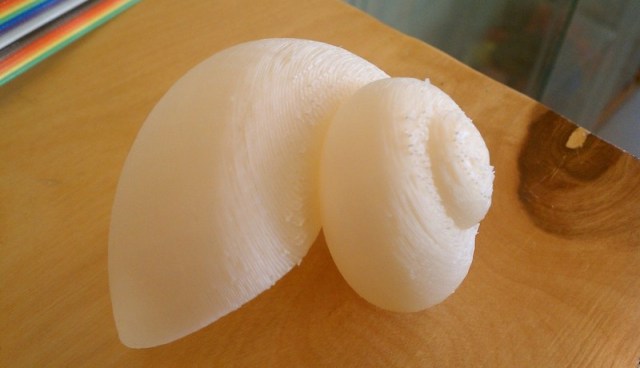We’re big fans of the home 3D printer here. It’s a truly disruptive technology, though for now the cost is still a bit too high, and the uses aren’t quite practical enough, for it to be a household item just yet. But that hasn’t stopped people from putting it to good use.
Project Shellter is one of the most interesting applications of the technology I’ve seen. The project aims to produce artificial shells for hermit crabs using a MakerBot, which would otherwise have to be supplied by harvesting spare shells from the ocean. It sounds a bit precious, yes, but it’s indicative of a promising trend of using fabrication tech for novel and helpful purposes.
Hermit crabs, you see, don’t actually make their own shells. Carapaces, yes, but the shells they live in are scavenged from sea snails, nautiluses, and other miscellaneous mollusks. And when they outgrow their home, they find another. Apparently there is a bit of a shortage in shells, however, and crabs are fighting over such inadequate homes as aluminum cans, bottle caps, and other bits of trash. Not good.

Miles Lightwood (as TeamTeamUSA) is working out of MakerBot headquarters to see what can be done to address this problem. And before anyone starts complaining that there are bigger problems to solve, consider that small problems are also worth solving if you have the means at hand. You may not be able to solve the homeless problem, but if you can spare a buck, you might solve one guy’s problems for a day. Same here: the proliferation of trash on the sea bed and the disruption of habitats isn’t going to be figured out by a couple guys and a home fab machine. But they might make the lives of a few sea creatures a bit better and it’s essentially research in wildlife prosthetics, which believe it or not is a real and important field.
Also worth noting: these shells are not being manufactured to dump in the ocean, but are for domestic use. If, however, a biodegradable material were to be developed akin to normal shell material, they could be added to natural habitats. But to continue.
The project is looking for designs that will accommodate the crabs. Many things need to be considered; for example, hermit crabs need a shell using a right-handed helix because that’s the way their body curves naturally. And a commenter points out that the crabs do ingest bits of the shell now and then, so it will need to be made of something non-toxic and possibly nutritious. Furthermore, the porosity of natural calciferous shells may be difficult to replicate using a fabricator.
It’s a slightly strange project, but mainly just because it’s so specific. If a dozen other people started projects as specific, they could be counted as a larger trend, and indeed Project Shellter is part of the trend of expanding the applications of domestic fabrication machines.
You can see and download the first design here, and if you have any suggestions or designs, they are looking for submissions and participation.
